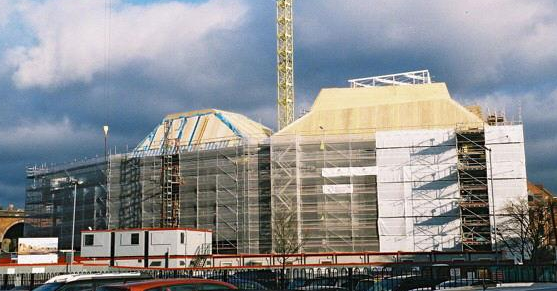The University recognises that operating our buildings requires working closely with the estates' projects team and maintenance staff to help us rise to the challenge of meeting our carbon targets.

We aim to provide spaces that enable health, wellbeing and productivity for all our students and staff and have a development and construction policy developed from UK Green Building Council resources and events to ensure our built environment is at the forefront of sustainability, biodiversity and carbon reduction. We are involved in the UKGBC’s work, applying a systems change approach to live real estate projects.
We will continue to work with students to help us match their needs to our requirements, utilising projects wherever possible. A recent example, students identified numerous 'underused' water outlets that require weekly flushing. This was done by estimating the amount of water used by flushing and identifying outlets that could be removed. The students also looked at how much water could be saved by the installation of flow restrictors across the university. The Estates staff are now implementing the report's recommendations. This won a Gold Green Impact Award.
Other current projects include:
- The use of sensor technology (smart scan/people counters), options to manage heating/cooling based on occupancy.
- Sustainable manufactured furniture
Our latest refurbishment, transforming a drab concrete to iconic gold glad home for our Medical School achieved a RICS SKA Gold award. The newly built Dukes Building , which is timetabled from September 2025 achieved an EPC A.
Construction and refurbishment targets
Annual quantitative and qualitative targets are set and the sustainability budget identifies specific projects to be achieved throughout the year. Please see our Sustainability Targets 2024-2025.
Our Energy page has more information on our Heat Decarbonisation Plan.
All tenderers for new projects are made aware of these objectives and the University’s commitment to sustainability. They are referred to the institution’s Sustainability Construction and Refurbishment Policy and relevant strategies (energy, water, transport waste and biodiversity) and targets.
